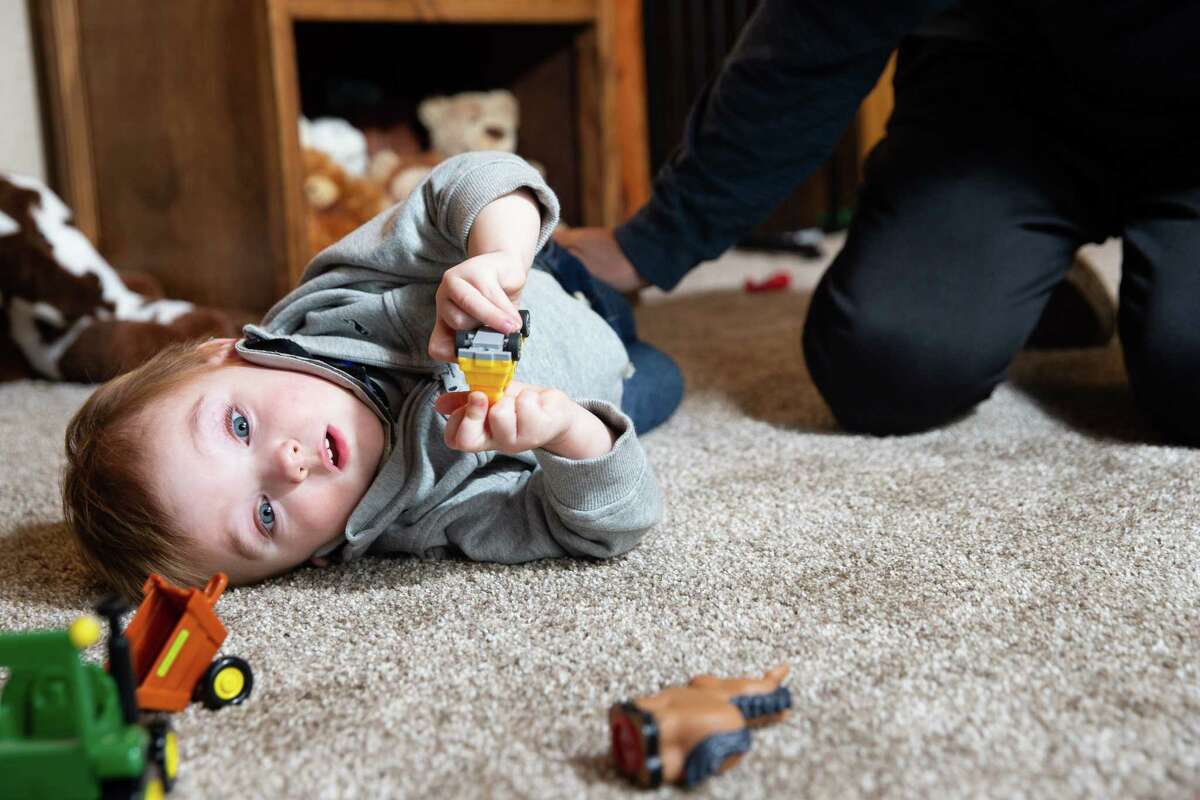
12/29/2022
Last September, at only 14 months old, Ripp was run over by a tractor. He was outside on the family’s ranch in El Campo, while his father Chase Macek and big brothers were working on their cattle trailer.
“Ripp was right there with his fake drill going,” Kendall said.
Then, as the family gathered with a few friends around the fire pit, preparing fajitas, Chase took a call.
In a matter of minutes, it seemed like the world flipped upside down. One of the Maceks’ sons came running up with Ripp, who was bleeding profusely from his ear.
“It literally took seconds,” Kendall said. “It was just a freak accident.”
Toddler Ripp Macek is home from the hospital — just in time for Thanksgiving.
Kendall, a former X-ray technician, knew something could be wrong with his brain, and they needed to keep his head elevated.
She and Chase jumped in their truck to take Ripp to the local emergency room, where a brain bleed and skull fracture were identified.
Ripp would need surgery, the Maceks were told. “Words were tossed around like paraplegic and quadriplegic,” Kendall said.
She requested a transfer to Memorial Hermann in the Texas Medical Center. “We’re going to the best of the best,” she said.
Within an hour, Ripp had boarded a Life Flight to downtown Houston.
“That’s when we felt like we could breathe again,” Kendall said.
At Memorial Hermann, instead of immediate surgery, the medical team recommended stabilizing Ripp and ordering further diagnostic tests.
“We sat in the waiting room for what felt like hours and hours,” Kendall recalled.
Ripp had a fever, borderline sepsis and his blood pressure was erratic — dropping deep down, then spiking extremely high.
He was losing blood, as well as cerebrospinal fluid, which surrounds the brain and spinal cord.
Ripp was placed on a ventilator and would soon need a blood transfusion. Additional imaging was ordered, and the details of his diagnosis became clear.
There were actually six cranial fractures and several brain bruises. He also had a cervical ligament injury and was placed immediately in a neck brace, or C-collar.
Ripp’s ear drum had ruptured, he had blood clots in his transverse and dural venous sinuses and a spinal hemorrhage.
“But he was a fighter,” Kendall said. “He had so much life in him.”
A wait-and-watch approach was recommended. After five days in the hospital, his ventilator was removed, and he was placed on a nasal cannula, a device that provides oxygen therapy through the nose. Ripp also was put on a feeding tube.
After seven days, his CSF leaking ceased. Then he began respiratory therapy, and rehabilitation followed. He was unable to swallow, sit up, crawl, stand, walk or grasp objects.
Kendall said the experience was like going back to the beginning of his infancy. “We were literally starting all over,” she said.
© CopyRights RawNews1st



